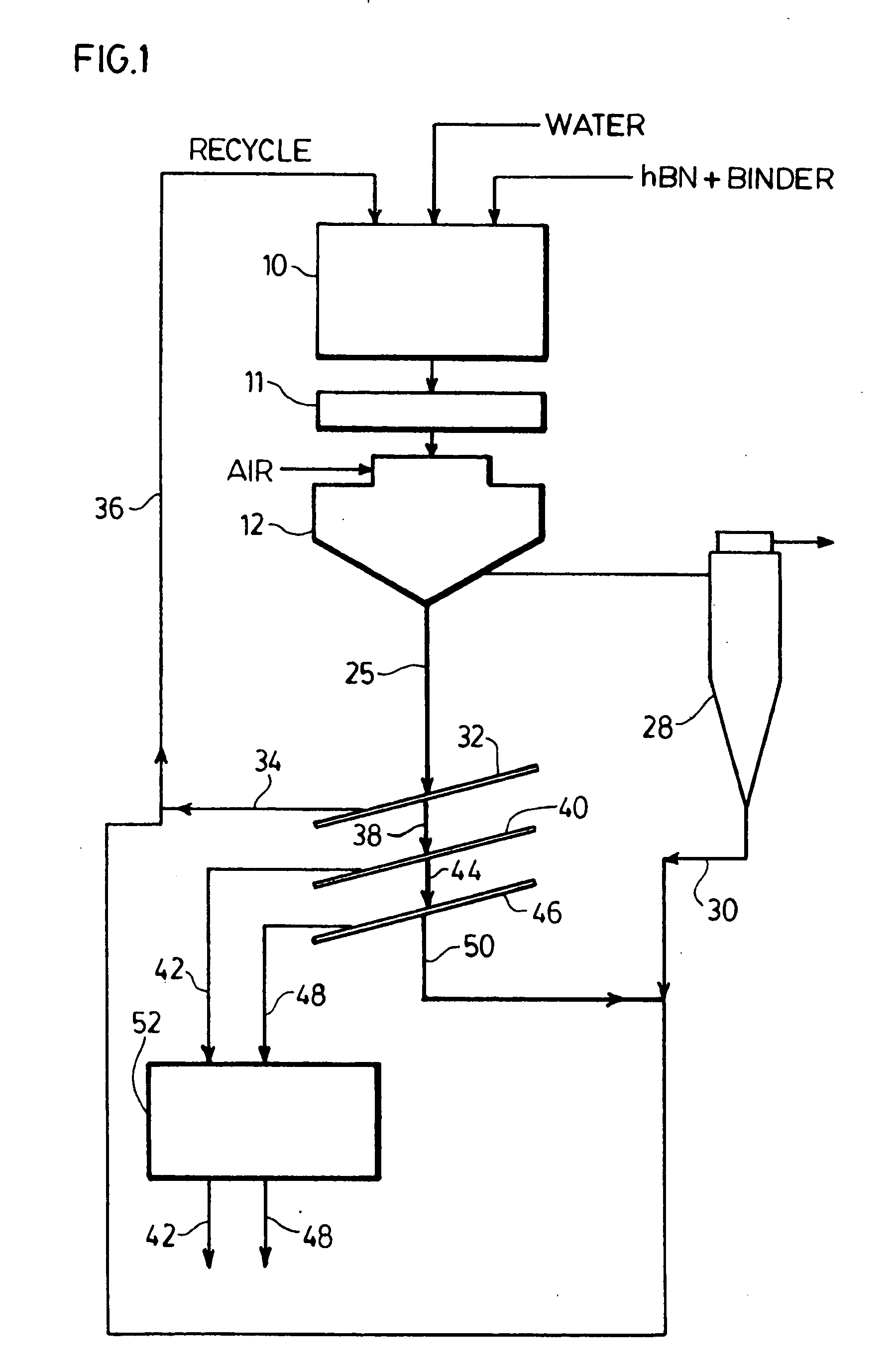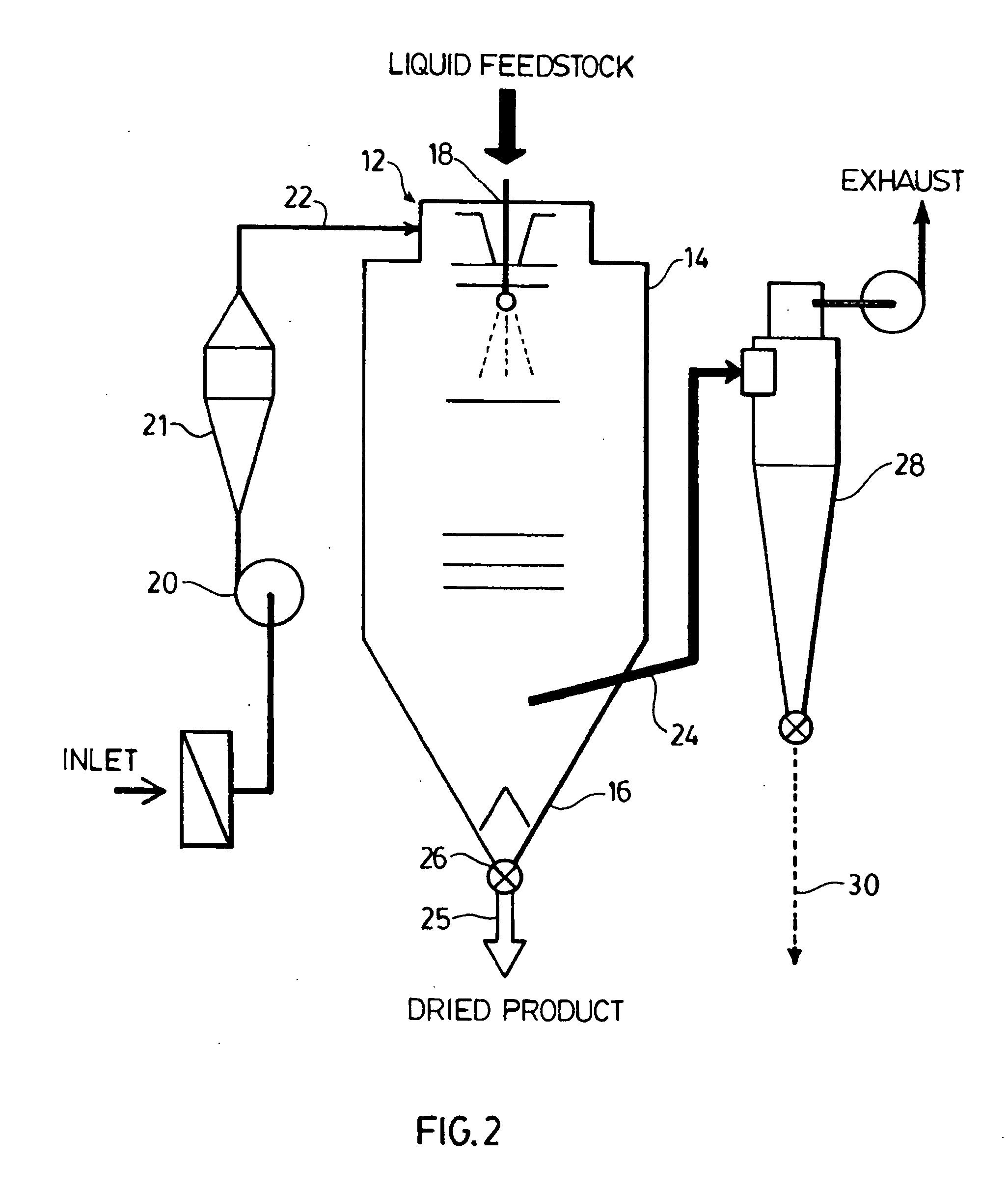Method for producing composite material for coating applications
a technology of composite materials and lubricant, which is applied in the direction of base materials, additives, inorganic chemistry, etc., can solve the problems of high cost of product further increase, high cost of process, and difficulty in further processing, so as to reduce the cost of final product, the cost of solid lubricant such as hbn is very high, and the recovery rate is high
- Summary
- Abstract
- Description
- Claims
- Application Information
AI Technical Summary
Benefits of technology
Problems solved by technology
Method used
Image
Examples
Embodiment Construction
[0025] With reference to FIG. 1, a preferred embodiment of the method of the invention is illustrated in which solid lubricant particles such as hBN particles, which may be crushed hBN or fine hBN particles having a size smaller than −325 mesh (45 micron), are blended with a binder typified by bentonite powder in a weight ratio of about 1:19 to 19:1 of hBN to binder, preferably in a weight ratio of about 9:1 to about 4:6 of hBN to binder, and more preferably in a weight ratio of about 8:2 hBN to binder, and slurried in water in mixing vessel 10 to provide a slurry of about 5 to 60 wt % solids in water, preferably about 20 to 30 wt. % solids in water, and transferred to tundish 11.
[0026] The water-solids slurry with the solids uniformly suspended therein can be atomized into droplets in spray chamber 12 into which heated drying air is passed. The water is evaporated from the droplets and the solids product collected continuously from the chamber. The binder glues the fine hBN partic...
PUM
| Property | Measurement | Unit |
|---|---|---|
| volume % | aaaaa | aaaaa |
| flame temperatures | aaaaa | aaaaa |
| weight | aaaaa | aaaaa |
Abstract
Description
Claims
Application Information
 Login to View More
Login to View More - R&D
- Intellectual Property
- Life Sciences
- Materials
- Tech Scout
- Unparalleled Data Quality
- Higher Quality Content
- 60% Fewer Hallucinations
Browse by: Latest US Patents, China's latest patents, Technical Efficacy Thesaurus, Application Domain, Technology Topic, Popular Technical Reports.
© 2025 PatSnap. All rights reserved.Legal|Privacy policy|Modern Slavery Act Transparency Statement|Sitemap|About US| Contact US: help@patsnap.com


